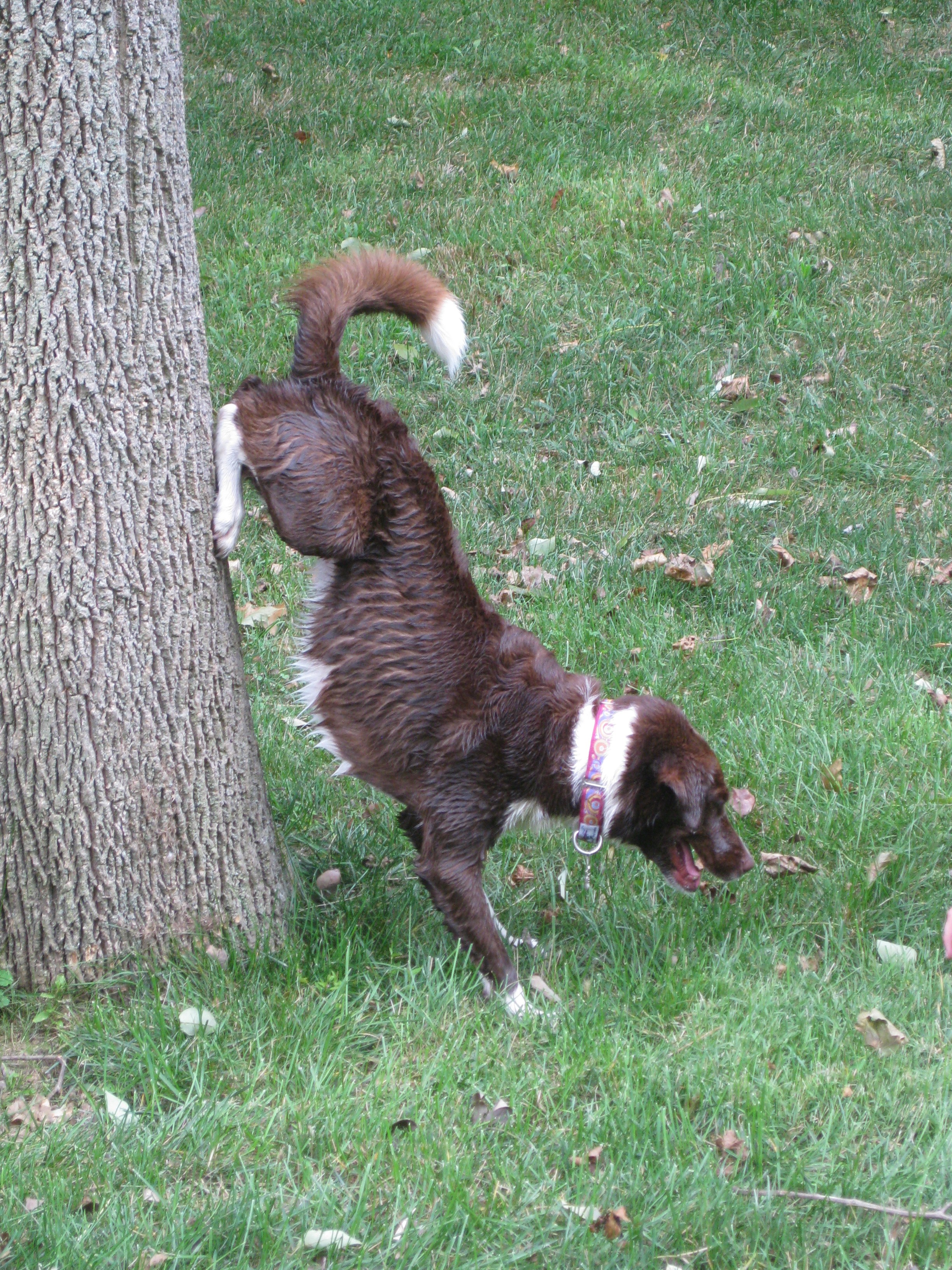First… yesterday’s photo…. (I’ve tried to make the photo smaller but it keeps publishing it HUGE! It’s small in the editing page but when I preview it gets huge…. so sorry!)
 Shayne was working on her handstand in a new environment without food. Since I increased the difficulty of the behavior asking for it outside, I made it easy by starting out rewarding just feet on a tree. She offered two really good extended handstands but someone isn’t very good with a camera and didn’t get a photo… I’ll probably do another session or two with the trees then start asking for the position without the support.
Shayne was working on her handstand in a new environment without food. Since I increased the difficulty of the behavior asking for it outside, I made it easy by starting out rewarding just feet on a tree. She offered two really good extended handstands but someone isn’t very good with a camera and didn’t get a photo… I’ll probably do another session or two with the trees then start asking for the position without the support.
I loved all of your comments!
Back on to today’s topic. I don’t really know what the cause is, but I feel like I have encountered more and more people who are struggling with some behavior modification (and training for that matter) stuff because they are starting with the most difficult or complicated methods.
When I’m approaching a problem (particularly a common problem), I generally know a handful of methods off the top of my head to address the problem at hand. My process, generally, is to start with the easiest solution and work through the methods in my tool box until I find something that works. It seems very common sense to start with the easiest method but I feel like I’m encountering more and more people who are trying some really difficult training protocols (and getting very frustrated and upset with them not working) to try and fix a problem.
Now some of the easiest solutions are management based but they still make a very big difference. Management can sometimes solve the problem but even if it doesn’t, it can lower the intensity of the problem making it easier to work through using other methods.
Instead of going back to square one on house training with a dog who had been reliable for a while… why not first try cleaning the spot with an enzymatic cleaner before going through the trouble of hourly potty breaks and heavy crating. There is a pretty good chance that as long as the spot smells of urine and hasn’t been cleaned with the enzyme the dog will continue to urinate there–no need for massive changes in routine or training…. let’s try cleaning the spot better first.
If you have a dog who is starting to resource guard over their meals in the food bowl… why start trying the tiring, frustrating, and ultimately dangerous process of staring down the dog and claiming the bowl when simply removing the bowl makes a world of difference. Take the bowl away, work on hand feeding for a little bit and then reintroduce the bowl.. it’s an easy first step to finding a solution.
If you try and implement a more challenging or precision driven protocol it is much easier to make mistakes and make no progress. What this leads to is a person working very hard on a complicated protocol, making some critical mistakes on the protocol which alters its effectiveness, and the person becoming very frustrated and potentially throwing in the towel. Every dog is different so not every method works on every dog…but many of the easiest solutions cannot hurt so there isn’t really a risk. Why not just try removing the food bowl… why not try cleaning up with an enzymatic cleaner… why not try changing the diet…. why not try using the crate … how about restricting access… let’s try an incompatible behavior. Easy first step solutions that may fix the problem and at the very least, they probably won’t hurt anything.
Why make it harder than it has to be? If you go through some easier methods and things don’t work out, you know you’ve tried and then it makes more sense to try the more involved protocol. If you skip the easy solutions and jump into the more involved plans, you may be setting yourself and your dog up to fail–which isn’t fun.
My Junior High School teacher was right with the “K.I.S.S” formula–Keep It Simple Stupid! Don’ try to use calculus when simple arithmetic might work 🙂

Amen! I think a lot of times people (including myself) forget that sometimes the best solution is based in good old-fashioned common sense.